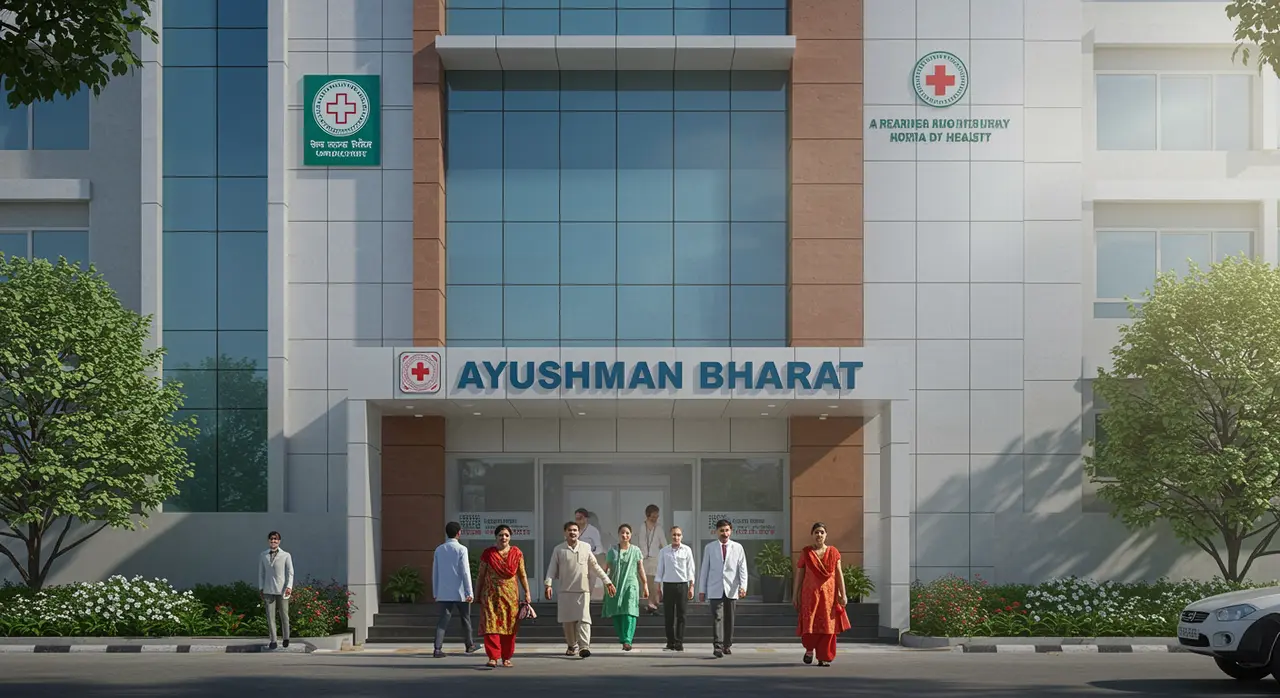Indias Healthcare Revolution: Ayushman Bharat, Digital Mission, and Affordable Medicine Transform Access
31 views
India’s healthcare system is undergoing a profound transformation, spearheaded by a series of ambitious government initiatives aimed at reshaping access, affordability, and quality of care. Programs like Ayushman Bharat, the Ayushman Bharat Digital Mission (ABDM), and the Bhartiya Janaushadhi Pariyojana (PMBJP) are not only addressing immediate healthcare needs but also laying the groundwork for a more inclusive and resilient system. While significant strides have been made, challenges such as the rural-urban divide and infrastructure gaps remain, calling for sustained focus and innovation.
A Revolution in Access and Affordability
At the heart of India’s healthcare overhaul lies Ayushman Bharat, a program that has earned its place as the world’s largest government-backed health insurance scheme. With over 37 crore beneficiaries enrolled, the initiative provides coverage of up to Rs 5 lakh per family annually, ensuring that even the most economically vulnerable households can access essential medical care. The program's inclusivity extends to senior citizens above the age of 70, a demographic often marginalized in healthcare planning.

Complementing this vast insurance safety net is the Bhartiya Janaushadhi Pariyojana, which has revolutionized access to affordable medicines. With more than 10,000 stores across the country, the initiative offers generic drugs at prices 80-90% lower than branded alternatives. This has been a game-changer for low- and middle-income families, who often bear the brunt of high out-of-pocket healthcare expenses. The PMBJP’s reach into rural and semi-urban areas has further democratized access to essential medications, ensuring that affordability is no longer a barrier to treatment.
Digital Integration: The New Frontier
The Ayushman Bharat Digital Mission (ABDM) represents a bold leap into the future of healthcare. By creating over 73 crore digital health accounts, the initiative is fostering a seamless ecosystem where medical records, prescriptions, and diagnostic reports can be accessed with ease. This digital integration not only reduces administrative inefficiencies but also empowers patients to take charge of their health journeys.
The potential of ABDM extends beyond convenience. By leveraging data analytics and artificial intelligence, the mission could enable more targeted public health interventions, early disease detection, and personalized treatment plans. However, the success of this digital transformation hinges on addressing disparities in digital literacy and internet access, particularly in rural areas.
Tackling the Root Causes of Illness
The government’s healthcare strategy goes beyond treatment to address the underlying causes of disease. Flagship programs focusing on sanitation, clean drinking water, vaccination, and nutrition are pivotal in improving long-term health outcomes. For instance, the Swachh Bharat Abhiyan has dramatically increased access to sanitation facilities, reducing the prevalence of waterborne diseases. Similarly, the Jal Jeevan Mission aims to provide safe drinking water to every household, tackling a critical determinant of health.
Immunization campaigns have also played a crucial role, particularly in reducing maternal and child mortality rates. India’s progress in these areas aligns with its commitments under the Sustainable Development Goals (SDGs), showcasing how targeted interventions can yield measurable outcomes. The decline in maternal mortality rates (MMR) and under-five mortality rates is a testament to the effectiveness of these efforts, though continued vigilance is essential to sustain these gains.
Persistent Challenges in a Changing Landscape
Despite these advancements, India’s healthcare system is far from flawless. The rural-urban divide remains a glaring issue, with rural areas often lacking basic healthcare infrastructure and skilled personnel. While urban centers boast world-class hospitals and specialized care, rural populations frequently rely on under-resourced primary health centers that struggle to meet even basic medical needs.
High out-of-pocket spending is another pressing concern. While programs like Ayushman Bharat and PMBJP have alleviated some of the financial burdens, many families still face crippling expenses for specialized treatments and diagnostics not covered under existing schemes. Bridging these gaps will require not just increased investment but also innovative financing models that ensure equitable access.
Moreover, the healthcare workforce remains stretched thin, particularly in underserved regions. The government’s push to promote alternative medicine under AYUSH (Ayurveda, Yoga, Unani, Siddha, and Homeopathy) is a step toward diversifying healthcare options, but it must be complemented by efforts to train and retain allopathic doctors, nurses, and paramedics.
Toward a Holistic Vision
India’s healthcare transformation is a story of both promise and complexity. The initiatives undertaken by the government have laid a solid foundation, but their long-term success will depend on addressing systemic challenges with the same vigor that has characterized their launch.
Equity must remain at the core of this vision. Bridging the rural-urban divide, ensuring digital inclusion, and reducing out-of-pocket expenses are not just logistical challenges but moral imperatives. Public-private partnerships could play a pivotal role in scaling solutions, particularly in areas like telemedicine and diagnostics, where technology can transcend geographical barriers.
As India marches toward its goal of universal health coverage, the lessons learned from these initiatives could serve as a blueprint for other nations grappling with similar challenges. The journey is far from over, but the steps taken so far signal a commitment to not just treating illness but nurturing wellness—a shift that could redefine healthcare for generations to come.